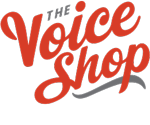Most corporations use podcasting for branding purposes, not to sell products or services. Businesses want to expand their current reach or try to connect with audiences that they have trouble reaching. They also need to focus on making content easy to find and convenient to consume for the current audience.
Many corporations will integrate High-Level Executives into the messaging during a podcast. The company President, Chief Executive Officer (CEO), Chief Marketing Officer (CMO), and others are typical executives involved in the podcast. Often, the host will interview the executive; other times, the podcast host may be the high-level executive. In any case, the podcast series generally keeps the same host for consistency.
Brand Building Using Multiple Participants:
A growing number of corporate podcasts have a host with several participants. While developing the podcast topic, the host will gather information from each participant to showcase their expertise.
Challenges:
• Time is valuable and limited
• Participants want to avoid commuting to a podcast/recording studio
• The host is the high-level executive
To offset these challenges, Creative Media Design (CMD) offers an Executive Podcasting Service that includes setting up a podcasting studio in a convenient company location or at the corporate office. Sometimes, the studio is set up in the high-level executive’s home.
A home podcasting studio provides more convenience for executives with time constraints.
After assessing the podcasting needs, CMD makes recommendations on what equipment is needed and can handle sourcing, purchasing, and delivery. After delivery, a CMD sound technician will travel to the company location to set up and test the podcast studio as well as train staff and key podcast participants. While the space does not need to be a professional sound booth, the technician ensures the designated area will accommodate high-quality audio.
A podcast studio can be set up in a company’s office location for convenient access to participants.
A podcast studio can be set up in a company’s office location for convenient access to participants.
Connecting Executives With On-Demand Recording:
Most high-level executives have low schedule flexibility. Additionally, the priority level to conduct or participate in a podcast may also be low relative to other demands. To address these issues, CMD will work with the company’s producer and record each participant separately, on their schedule. There is usually a host plus one or more guests featured in a podcast.
The questions are typically prepared and sent to the participants in advance. CMD consults with the client for the best connectivity platforms to optimize audio quality, given their remote podcasting needs. After the participant records their part, they send the audio file back to CMD. The audio is edited and transcribed, so it sounds conversational.
Several business podcasts are available to review on CMD’s “Podcasts For Your Business” webpage.
CMD’s podcasting process brings high-level executives together on their schedule.
Some topics are better suited to having all the participants together at the same time during the recording for better “back and forth” conversations. CMD provides expertise and guidance to set up the best connection for participants who are in remote locations to record the podcast.
Podcasting is a growing trend in banking & financial services, pharmaceutical companies, law firms, along with many others. By having a podcasting program in their marketing quiver, businesses are connecting with audiences with more frequency and higher engagement than traditional forms of advertising or branding.




